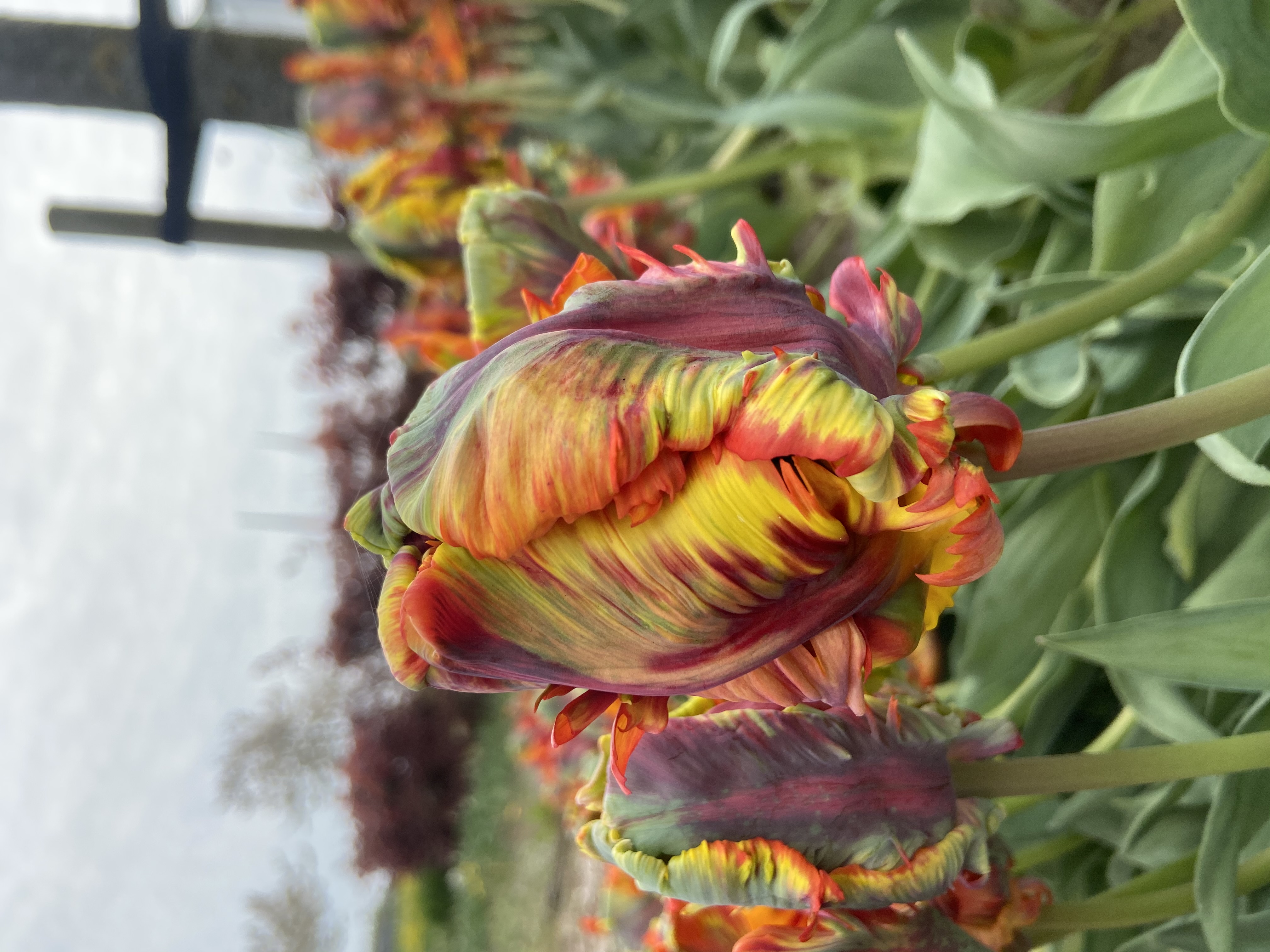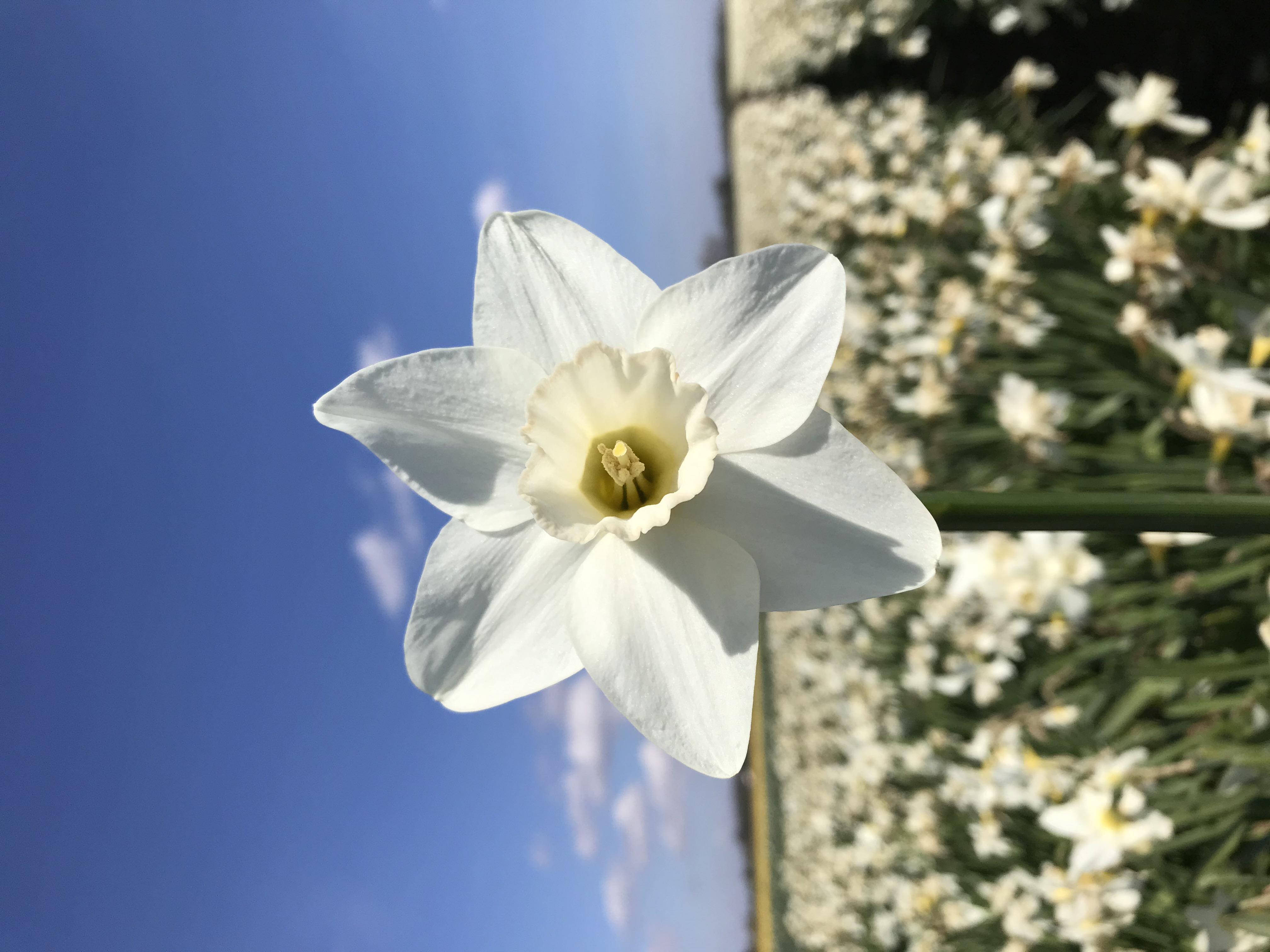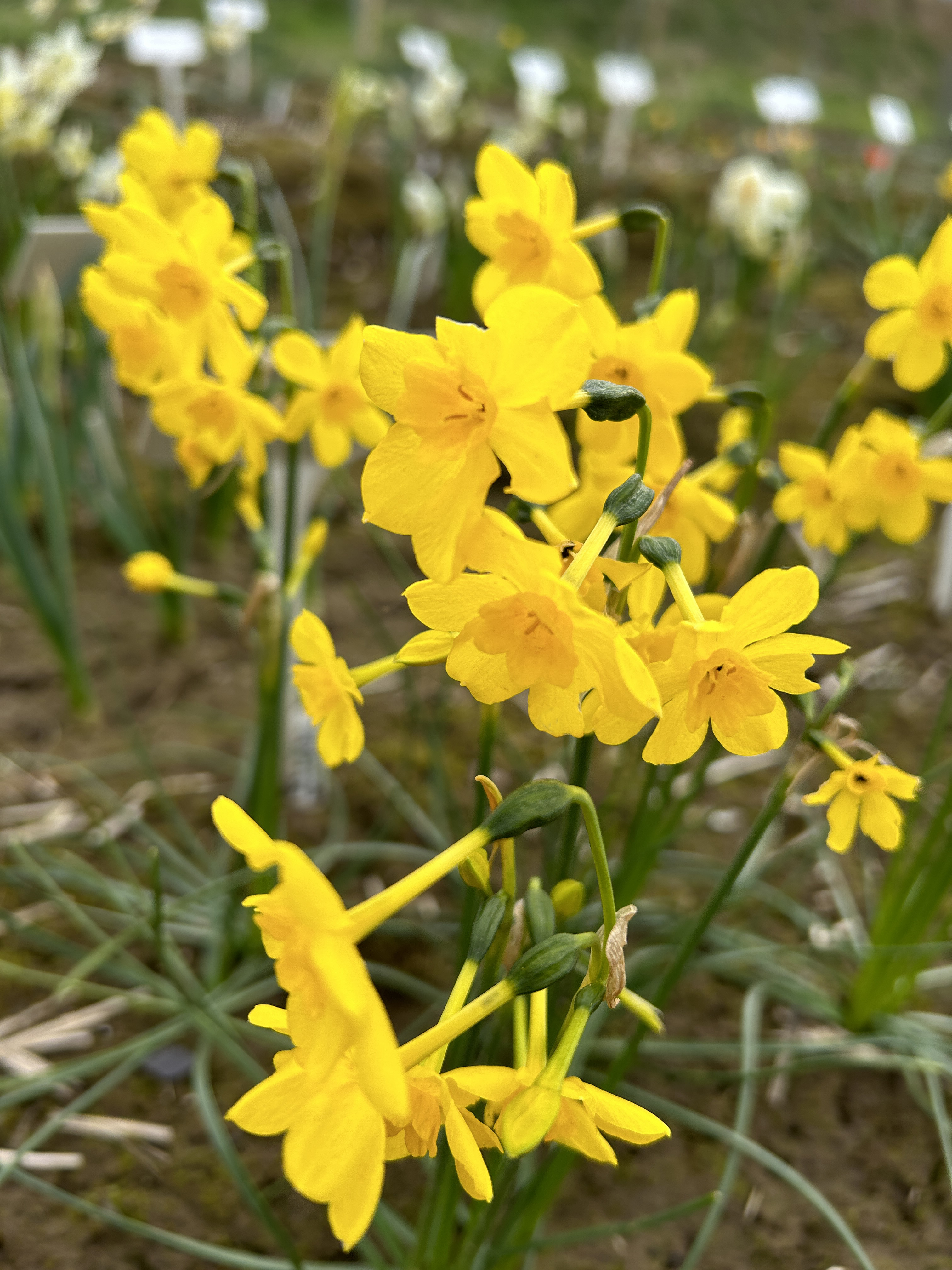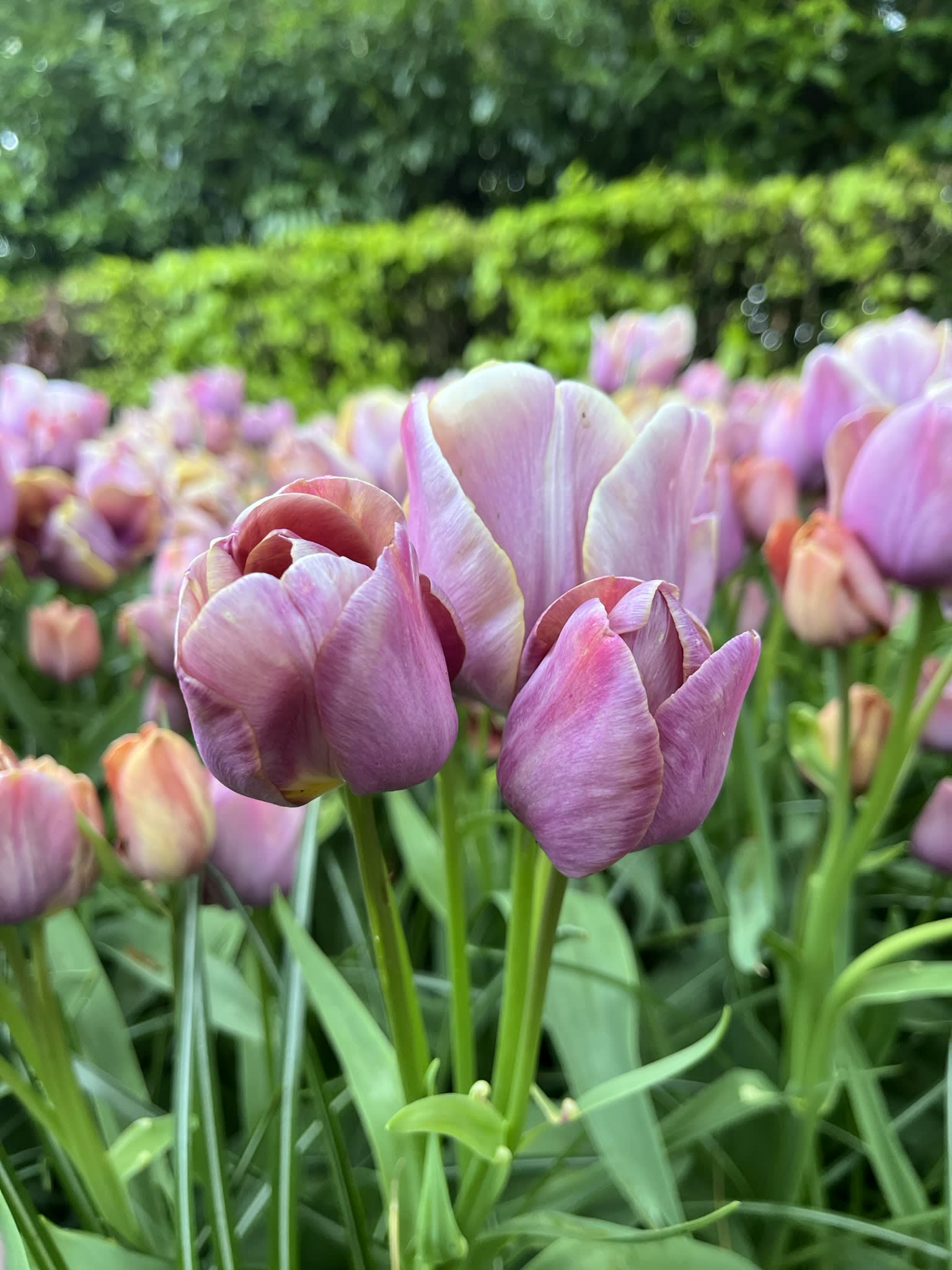Spring bulbs offer us the opportunity to make annual changes to our outdoor space without having to do difficult and major replanting. Keen to find out what new varieties we can buy this November, we contacted a couple of the UK’s leading bulb growers to ask for their recommendations and tips on how to get the most from our spring bulbs, particularly tulips.
Bulb expert Stephen Teeuw from Peter Nyssen, an award-winning flower bulb specialist with over 60 years’ experience in this sector, shared some tips on how to grow and use tulips which can be more difficult to achieve good results from if not given the correct growing conditions than daffodils and other spring bulbs:

“People are always asking how to plant. In the main, tulips are really easy to grow. The information we give people is that the biggest cause of failed tulips is because they can be too wet in winter and too dry in spring. They will grow in shade or sun, in all soils but tulip roots are thin and can rot in very wet winters. When you are planting tulips, they must go to a depth of 8-15 cm. If they are planted in well composted garden soil, soil actually allows for slight air flow, preventing the bulbs from drying out. If, however, you are planting them in pots, which are notorious for drying out (particularly if you are using just multi-purpose compost) you need to ensure that when you water a pot, that the water goes deeper than just the first 5cms. I recommend that for pot grown tulips, you use a blend of topsoil, compost and grit which allows both good drainage and suitable water retention. In the garden, it is always worth mulching and topping up the well-rotted garden compost each year to ensure that the soil structure remains friable.
Whilst tulips can be planted close together in pots, consider them more as annuals. If tulips are planted close together to get maximum impact, there is a lack of air flow between their leaves, and this encourages botrytis which leads to tulip fire. This is hard to get rid of and will leave spores in the soil for future seasons. It can take three to six years before it is safe to reuse infected soil. This has been a particular problem due to the wet winter we had over 2023-24.

When it comes to selecting tulips, decorative tulips are best grown as annuals. The species tulips, however, with their smaller bulbs are more likely to return in a garden border situation for a second year; some may also naturalise by bulb division and by spreading seeds. These species tulips are closer to the original species of tulip and are an extremely important part of our flower heritage. Not only that, but they will play a large part in developing tulips for the future that are long lasting and easy to cultivate. Many decorative cultivars need a bulb size of at least 10cm circumference to flower, whereas species tulips only need a size of 6cm. You’ll notice that when you lift tulips after flowering the bulb will have split into many more, smaller bulbs, often too small to grow again.
There are some tulips that perform quite well year after year. Darwin Hybrid Tulips, Ballerina, Spring Green, to name a few however they may only have three to four years in them, gradually diminishing season after season. To encourage returning growth plant 15-20cm deep, remove the seed heads after flowering and let the foliage feed the bulb. Lift the bulbs in summer and separate the smaller offshoots. Store in a cool dry place and replant the bigger bulbs from September.
New tulips are very interesting. They can take up to 20 years to develop into a usable stock to cultivate for commercial purposes. We have seen big changes in our landscape and our attitude to plants over the last three decades. We want a more ecologically sustainable plant that doesn’t require as many fertilisers and pesticides, requiring a naturally more bug resistant flower and bulb. Growers are beginning to change what they grow but it is a long process. It may see the end of some favourite varieties but there will always be plenty of choice on the market! (We have 280 cultivars on our website but there are many more still available). The natural life span of a bulb can be between 30 and 70 years before the strain begins to weaken and become harder to grow. One thing growers hate is wastage.”

Choosing and Planting Your Bulbs
When it comes to new bulbs to choose from there are plenty of options from crocus to daffodils and narcissus, hyacinths to tulips and irises, to name but a few. We have picked out a few top choices, but you will need to get cracking and plant them soon before the weather deteriorates further. November is a good month to plant tulips and the other bulbs will grow if you get them planted.
Garden Fragrance
If you are looking scented blooms opt for Hyacinths and Narcissi. Take a look at Hyacinth Scarlett Pearl with its fuchsia to reddish pink flower heads and fabulous fragrance. Two new Narcissus have been introduced by Peter Nyssen this autumn: Narcissus Angel’s Breath is a triandrus narcissus with three to four flower stems per bulb and beautiful scent. They will naturalise well if planted in the garden. Narcissus Sunny Day is stunning – with golden yellow flower petals intermixed with orange, looking almost like a carnation. Perfect for the front or middle of a border.
New Varieties
When it comes to new varieties of tulips the selection is vast. Some of Stephen’s recommendations include Tulip Marshmallow with deep raspberry pink centre petals with cream to ivory white touches and green markings. This double early tulip has peony-like flowers and is a shorter variety so is more wind tolerant. Tulip Power Parrot, as the name suggests, is a vibrant dark fuchsia to magenta pink, flushed green and purple to the tips occasionally a whisper of white. The flowers are long lasting and will stand up to the wind. Stephen also suggests Dutch Iris King Mauve with its lilac and mauve petals and yellow blotch on fall. Irises fill the gap between the late tulips and early summer perennials and work well when planted with alliums flowering in May and June.
We also asked Ian Clark, Marketing Manager from fourth-generation family business Taylor’s Bulbs, for his recommendations of new varieties they have introduced to the market.
If you are looking for a narcissus which is a celebratory favourite, Narcissus Filly, a prolific flowering Daffodil with white petals and a light pink cup was Mary Berry’s favourite variety when she visited Taylors Bulbs in spring 2022. Flowers in March/April at a height of 35cm. Another recommendation is Narcissus Twinkling Yellow, both fragrant and multi-headed, this RHS Award of Garden Merit winning variety flowers in March/April at a height of 40cm.
Unusual Flowers
Unusual Tulip varieties include Tulip Pamplona, an RHS Award of Garden Merit variety with full deep red double flowers. Flowering at a relatively short height of 35cm in April/May, this variety is perfect for fronts of borders or pots. Tulip Rasta Parrot is a particularly striking variety with unique ruffled orange/crimson/yellow flowers providing a riot of colour. Flowers at a height of 40cm in April/May. Tulip Brisbane with strong fringed double flowers in soft pink/orange shades. Flowers at a height of 45cm during April/May. Perfect for teaming with yellow Narcissus and Daffodils is Tulip Blue Heaven with its multiple uniquely coloured lavender/blue flowers, makes it a really striking Tulip. Flowers at a height of 40cm during April/May.

Late Flowering
Some later flowering bulbs for you to consider are Allium Party Balloons, a new Allium with multiple large flowers per stem, flowering June to August at height of 55cm. Scilla are also worth looking at, especially Scilla litardierei Royal Amethyst, which are good for naturalising. This RHS Award of Garden Merit winning variety has multiple star shaped blooms on stems 25cm tall and flowers in May through to June.
Enjoy searching for bulbs in your local garden centre or online. Peter Nyssen Bulbs can be found at peternyssen.com and Taylor’s Bulbs at www.taylors-bulbs.com









